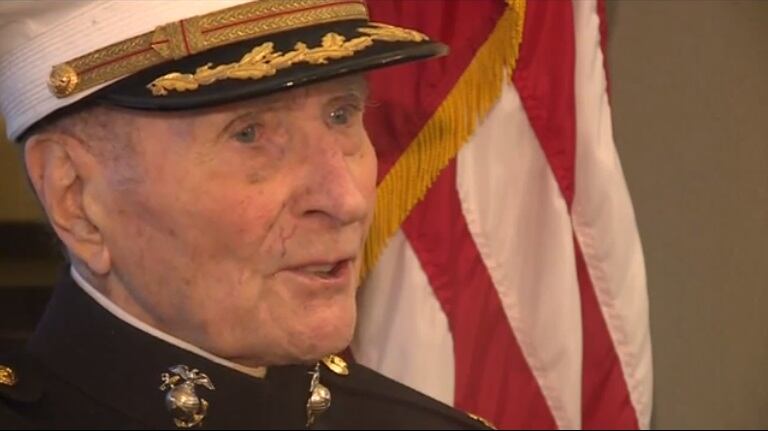When Dorothy Schmidt Cole joined the Marine Corps in July 1943, she wasn’t thinking about the impact her service would have on the Corps or on generations of women to come.
She just wanted that stylish uniform.
“I loved the hats we were wearing,” Cole said in a call with Marine Corps Times on Monday. “It was fun when I got the first complete Marine outfit. I loved it very much and felt right at home with it.”
But the Marine Corps wasn’t Cole’s first choice. She initially wanted to join the Navy — for its hats — but was told she was too short.
RELATED

And while she downplayed her reason for joining, Cole also said her decision was influenced by the community in her hometown of Warren, Pennsylvania, and the longing for a sense of purpose.
“There were women volunteering with the Red Cross and knitting while sitting in church, so I thought I had to do something,” Cole said. “At the time, I didn’t think I was doing anything great. I knew I was helping our country.”
When Cole found out she was accepted into the Marine Corps Women’s Reserve, she thought she should learn to fly first.
“We had a small airport in Warren and I decided to try some flying,” Cole said. “It was just some little Piper Cub I went in and I got about 200 hours of flying time.”
By the end of 1944, only 40 women had been permitted to fly noncombat missions with the Women Airforce Service Pilots. And the Marine Corps wouldn’t see its first female pilot until 1995. During World War II, women weren’t allowed to hold many of the jobs men could in the military, but Cole just wanted to learn something new.
“I thought that it would impress the Marine Corps, but it didn’t,” Cole said. “I just landed on my old typewriter. The girls now, they have an open field with what they can do, so it’s gotten better.”
By the time Cole enlisted, the Marine Corps Women’s Reserve had already been training female Marines for about five months. By April 1943, some 525 women were entering training every two weeks, according to the Women Marines Association. By February 1944, one year after enlistment was opened to females, some 15,000 women had signed up and were placed in 200 different assignments.
In 2019 there were 613 female Marines and sailors serving in units previously only available to men. The Marine Corps opened ground combat jobs to women in 2016 and have been recently looking for more female infantry officers.
“Women Marines have served at every rank up to lieutenant general, leading and making Marines,” said Marine Corps spokesman Capt. Joseph Butterfield in a Monday email to Marine Corps Times. “Marines like Sgt. Cole helped pave the way for this continued tradition of service and sacrifice.”
Cole spent six weeks in boot camp at Camp Lejeune, North Carolina, before being transferred to a firing range in Quantico, Virginia, where she spent two years typing correspondence for officers.
“It was kind of a tough time and we were not welcomed too well by many of the men in the service,” Cole said. “But they got over it.”
Cole said she and the other women Marines would be called “all sorts of names by a certain amount of men.”
“It was a bit of harassment, but everybody got over it and went about their business,” Cole said. “We got our work done.”
When asked whether she felt like she and the other women Marines of her time had a part in shaping history or influencing current female Marines, she said “I suppose.”
Cole spoke of a recent acquaintance she made through a family friend. She said the two haven’t met yet, but 21-year-old Kate, an active duty Marine stationed in Okinawa, made her a beaded bracelet out of Japanese clay.
“It’s very beautiful,” Cole said. “I enjoy wearing it and looking at it.”
Cole turned 107 on Saturday, making her the oldest living Marine, according to the Marine Corps.
Jared is the manager of print design for Sightline Media Group's five magazines under the Military Times and Defense News banners.




